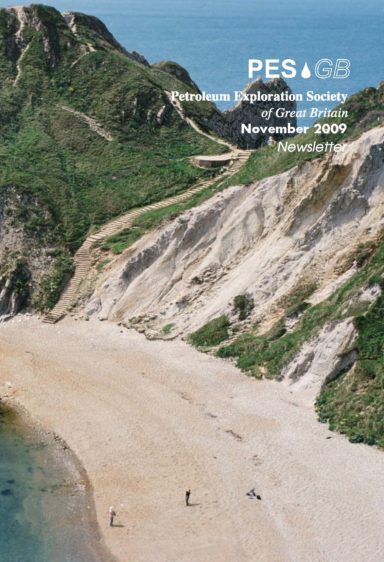PESGB November 2009
- Oil Industry Hash Report
- Africa Conference Review
- Salary Survey
- Non-Seismic Geophysics Seminar Review
- BGS Core Store
- South America
Plus much more inside
President’s Page- Jon Gluyas
It is time to cast your votes and to elect those who will form the 2010 PESGB Council. The posts up for renewal this year are: President Elect, Secretary, Aberdeen Director Elect, Training and Education Director and Events Director. You will find information on each of the candidates for each of the positions in the insert included with this newsletter. Please vote; the more of you who do so, the better Council represents the wishes of the membership.
I have recently changed jobs. Indeed that may be too mild a description, I have changed careers. With 28 years in the petroleum industry behind me, I have become an academic. However, I have not swapped my geological hammer for a Greek manuscript. The new post I have taken at Durham University is in Geoenergy and CCS. Thus the links with the petroleum industry are imperative and will remain strong.
While carbon capture and storage will be the mainstay of my work over the next few years, the geoenergy piece allows for investigation into other parts of the earth energy system. There is already much published on carbon storage and it is clear to many that the knowledge, skills and technology within the petroleum industry are directly applicable to this emerging market. This appears to be true at so many levels. For example, I recall that in my early years in the industry I was set a project within BP designed to be able to predict porosity in reservoirs ahead of drilling. Conceived by the current Geological Society, President Designate, Bryan Lovell, the strategy was to thoroughly understand the diagenetic processes involved in the transformation of sand to sandstone. More often than not the precipitation and/or dissolution of carbonate minerals was an important late-stage diagenetic event associated with either evolution of or catastrophic change in formation water chemistry. Might these natural systems hold clues as to how prospective storage sites react in geochemical terms to the injection of carbon dioxide?
The potential applicability of our skills to the utilisation of other sorts of geoenergy has also struck a chord with me recently. We manage our old fields by way of their water production – hot water, a resource ignored at the moment. If we could efficiently convert this low-grade thermal energy to electricity we could perhaps bypass the gas poverty of the ageing North Sea fields. Further into the future, is it possible the skills developed by reservoir engineers and drillers to manage fields could be used to manipulate the burn-front in underground coal gasification and so change it from almost a novelty activity into viable large-scale industry? If so the positive environmental impact versus deep mining and surface burning of coal would be significant. Thinking of coal mining brings me back to County Durham. Evidence of a mining history both deep and opencast abounds be it the terraced rows of miners houses, the scarred landscape or some of the social conventions. Yet just a few days ago I uncovered a piece of Durham history of which I was unaware. In 1912 eminent chemist, Sir William Ramsay led the world by initiating the first ever underground coal gasification at Hett Hill, less than a mile from where I now live. Having been allowed the privilege of joining an outstanding group of scientists and engineers at Durham Energy Institute I hope that Durham can once again help lead the world in energy research.


